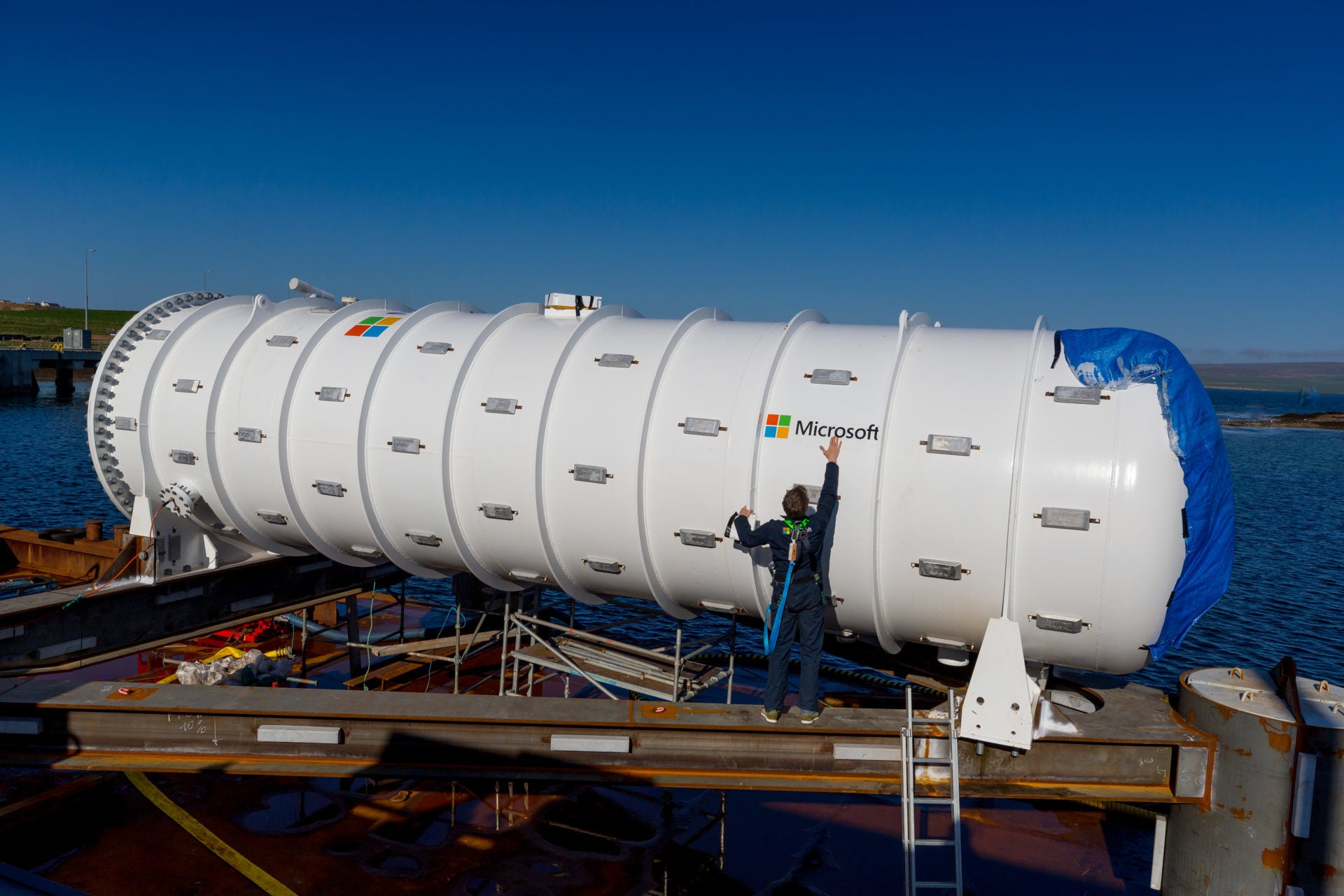
Off the coast of Orkney, a white cylinder containing 27.6 petabytes of computing storage rests on the seabed. The idea is to use the sea to cool Microsoft‘s underwater data centres – but some experts worry that it could come at a cost to the environment.
Microsoft has been experimenting with underwater data centres since 2015. Recently, its CEO Satya Nadella announced that they would play a major part in expanding the company’s global cloud computing platform, Azure.
Speaking at the Microsoft Future Decoded conference in London last Thursday, he said: “Since 50% of the world’s population lives close to water bodies, we think this is the way we want to think about future data centre regions and expansion.”
As well as using the sea as a natural cooler, the underwater data centres are quick to build and are self-sustainable. In the case of Project Natick off the Orkney coast, it runs 100% from Orkney’s advanced renewable energy infrastructure.
Combatting the carbon footprint of data centres
Power hungry data centres are expected to consume a fifth of the world’s electricity by 2025 and they will soon have a bigger carbon footprint than the entire aviation industry.
And while Microsoft’s novel approach undoubtedly has its benefits, the heat waste given off by underwater data centres could pose other drawbacks, says George Adams, director of energy & engineering at SPIE UK.
How well do you really know your competitors?
Access the most comprehensive Company Profiles on the market, powered by GlobalData. Save hours of research. Gain competitive edge.

Thank you!
Your download email will arrive shortly
Not ready to buy yet? Download a free sample
We are confident about the unique quality of our Company Profiles. However, we want you to make the most beneficial decision for your business, so we offer a free sample that you can download by submitting the below form
By GlobalData“Running on servers at the edge of the wireless network significantly reduces the amount of pressure on networks caused by applications and data transactions,” he said.
“However, given huge international concern about the rising temperature of the oceans and the wider implications for the environment, using the ocean as a heat exchange to reduce energy used to cool data centres, could be construed as conflicting with environmental objectives.”
“This could be seen as a very technology-orientated solution as to how it performs in relation to the environment will be established once the results are made available.”
Microsoft underwater data centres: “A few thousandths of a degree warmer at most”
Microsoft’s Ben Cutler, who oversees Project Natick, previously told the BBC that “the water just metres downstream would get a few thousandths of a degree warmer at most”.
It is unclear if a proliferation of underwater data centres would have a more notable impact. Dr Gordon Watson, marine ecologist at the University of Portsmouth, says the impact on marine life should also be considered.
“Whilst there may be substantial benefits for companies such as Microsoft in transferring data storage systems offshore, the effects of any structure placed in the marine environment, especially one that generates substantial heat locally, would have to be investigated,” he told Verdict.
He added that any impact created by undersea data storage systems “would be negligible” compared to climate change-driven global warming, but called for the correct protocol to be followed.
“Marine spatial planning protocols and the licensing of activities would still have to be followed with any associated Environmental Impact Assessment having to be performed,” he explained.
“Planning and licensing legislation in the marine environment is now catching up with terrestrial areas, so it is not as easy (at least in countries where they have advanced marine planning legislation) as just sticking something on the seabed and retrieving it five years later.”
It is worth noting that Microsoft has been taking care to monitor the environmental impact; it has placed a webcam on Project Natick to observe the impact on marine life.
Adams, however, believes that localised data centres are part of the solution to dealing with the heat by-product, but in ones “where access to using the heat is viable.”
“However, to keep throwing away this increasing level of waste heat is not acceptable in relation to mitigating climate change.”
Read more: Half of UK businesses lack an AI strategy, warns Microsoft report







